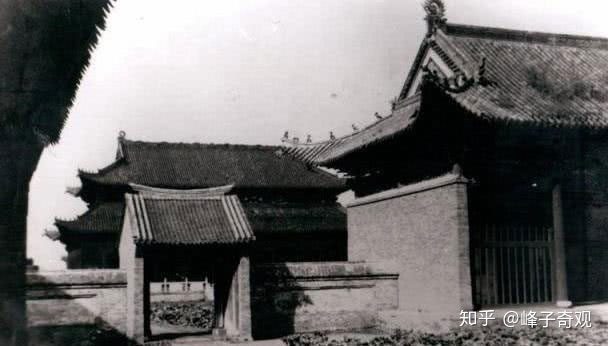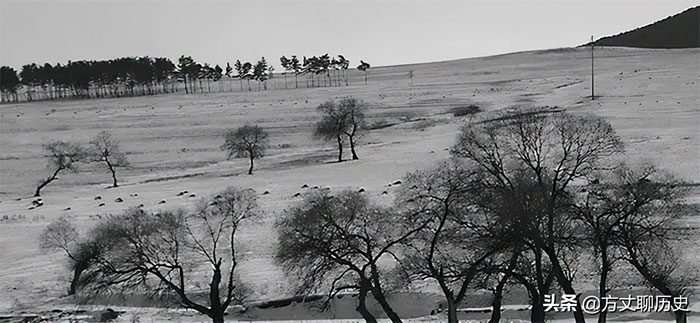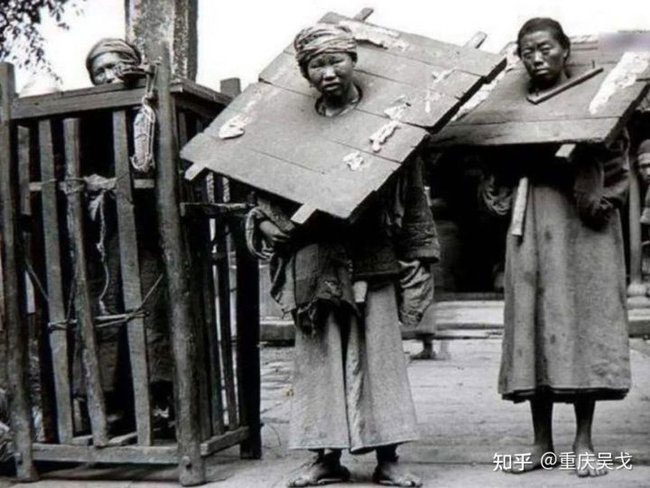During the Qing Dynasty, there was a punishment that terrified prisoners: exile to Ninggu Tower. When prisoners were exiled here, they faced death, and many preferred a death sentence over this punishment.
A desolate land, plagued by rain and snowstorms year-round
Exile was a form of torture in ancient times, ranking just below the death penalty. Depending on the crime, prisoners would receive varying degrees of punishment, with exile distances of less than 3,000 miles.

A corner of Ninggu Tower captured.
In the Qing Dynasty, prisoners convicted of crimes were exiled to Ninggu Tower. This was a key frontier area on the Northeast border during the Great Qing Dynasty, now part of Heilongjiang Province (China). Therefore, the imperial court prioritized the development and construction of Ninggu Tower. This land required many inhabitants for development, making Ninggu Tower one of the choices for the Qing to exile prisoners.
The natural climate here is harsh, with sparse population. The surrounding area is mostly primitive forest, wasteland, and swamps. Although there are no people, all kinds of wild animals roam freely. In winter, Ninggu Tower is covered in snow, fierce winds blow, and temperatures can drop to minus 50 degrees Celsius.
Scholar Wu Zhao Qian once wrote: “Ninggu Tower is the poorest place on earth; from spring until mid-April, there are strong winds, thunder, and lightning; from May to July, it rains continuously; by mid-August, snow falls; and by September, rivers are frozen solid. As soon as snow touches the ground, it turns to ice, and for miles, all one sees is a blanket of white snow.”

The desolate land with a harsh climate terrifies prisoners.
Prisoners must walk 50 km each day during their exile
On the way to exile, prisoners wore heavy chains weighing dozens of pounds and were escorted by soldiers. With the chains, movement was incredibly difficult, and the Qing Dynasty mandated that prisoners must reach their exile destination within a stipulated time, or face punishment.
To avoid overtime, soldiers often urged prisoners to walk at least 50 km each day, even in inclement weather, denying them any rest. Furthermore, women during the Qing were often bound at the feet, making it a cruel task for them to walk 50 km daily.
Throughout the long journey prisoners were not fed three meals a day. The Qing mandated that daily rations for exiled prisoners were 8 taels, which is less than half a kilogram. For prisoners under 15 years old, they received only 4 taels. However, even this meager amount could be taken by soldiers with bad tempers, leaving prisoners starving throughout the 50 km trek.
The soldiers’ attitude determined the quality of life for prisoners during their exile. A significant factor influencing this was whether prisoners could bribe the soldiers. However, having been sentenced to exile, how could prisoners still possess money for bribes? If they couldn’t pay, soldiers would surely make the journey harder for them.
The long journey often took them through primitive forests, where most of the exiled prisoners were either devoured by wild beasts or died of starvation along the way. Thus, the mortality rate during the escorting process was very high; records indicate that only 1 in 3 exiled prisoners could reach Ninggu Tower.
Even if they managed to arrive safely at Ninggu Tower, the suffering and torment were far from over for the exiles. In winter, with temperatures plummeting to minus 50 degrees, prisoners had to endure the cold with only thin clothing to protect them from the biting chill each day. In summary, during the mid and early Qing Dynasty, this place was certainly not meant for human habitation.
Life as a prisoner is worse than death

Female prisoners suffer greatly on their way to exile.
Exiled prisoners were not entirely imprisoned; they had to engage in various forms of grueling labor, such as cultivating wasteland, farming, logging, and quarrying, as well as constructing roads and bridges. Prisoners worked day and night, with little time for rest, and due to insufficient food, most were emaciated. When officials were in a bad mood or displayed cruelty, they would be beaten mercilessly. The purpose of these tasks was to exploit the forced labor of the convicted to develop and improve the royal family’s desolate territories.
Endless loneliness was also a form of torture for the prisoners. They would work day in and day out, with no hope or expectation of change; the chance of receiving a pardon from the emperor for prisoners in Ninggu Tower was almost non-existent.
You might ask why they didn’t choose to escape? In reality, this area was mostly uninhabited, and wild animals often lurked to attack. You could easily become food for the beasts as soon as you stepped outside.
And if a prisoner attempted to escape, their family would suffer the consequences. After all, at that time, the emperor wielded immense power. Female prisoners exiled to Ninggu Tower were imprisoned for the remainder of their lives; many did not die from illness but succumbed to depression and loneliness over decades.
Prisoners exiled to Ninggu Tower generally had to serve a sentence of 10 years there before being released depending on circumstances; however, many could not endure until the 10 years were complete and died along the way.
As life for prisoners at Ninggu Tower was worse than death, during the Qing Dynasty, it was often said that “it is better to walk the road to Huangquan than to go to Ninggu Tower.”


















































